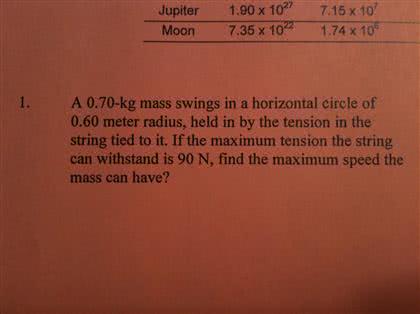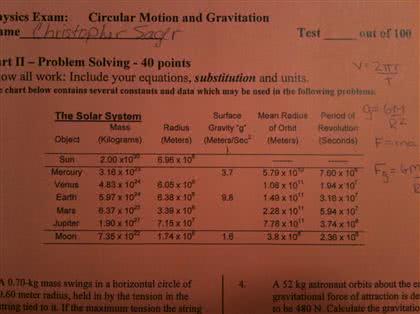PHYS 1300 Lecture Notes - Lecture 12: Smax, Centripetal Force, Resultant Force
Document Summary
Phys 1300 lecture 12 newton"s 2nd law in circular motion. Examples of newton"s 2nd law in circular motion. An object moves at a constant speed ac in a circle of radius r. This object experiences centripetal acceleration: therefore there is a resultant force acting to cause this acceleration. This resultant force is sometimes called the centripetal force. T = 9. 5n: a 1. 0 x 103 kg car moving at a constant speed of 21 m/s crosses the rounded top of a hill that has a radius of curvature of 1. 0 x 102 m (ignore friction). Determine: the normal force exerted on the car. Fy = mac mac = fg fn. Fg: the car"s speed when fn is zero. 0 = mg mv2/r mv2/r = mg v2 = rg v = (cid:3493)(100)(9. 8/^2) v = 31 m/s. It is convention to refer to the sum of the forces acting towards the centre of the circle as the centripetal force (fc).



